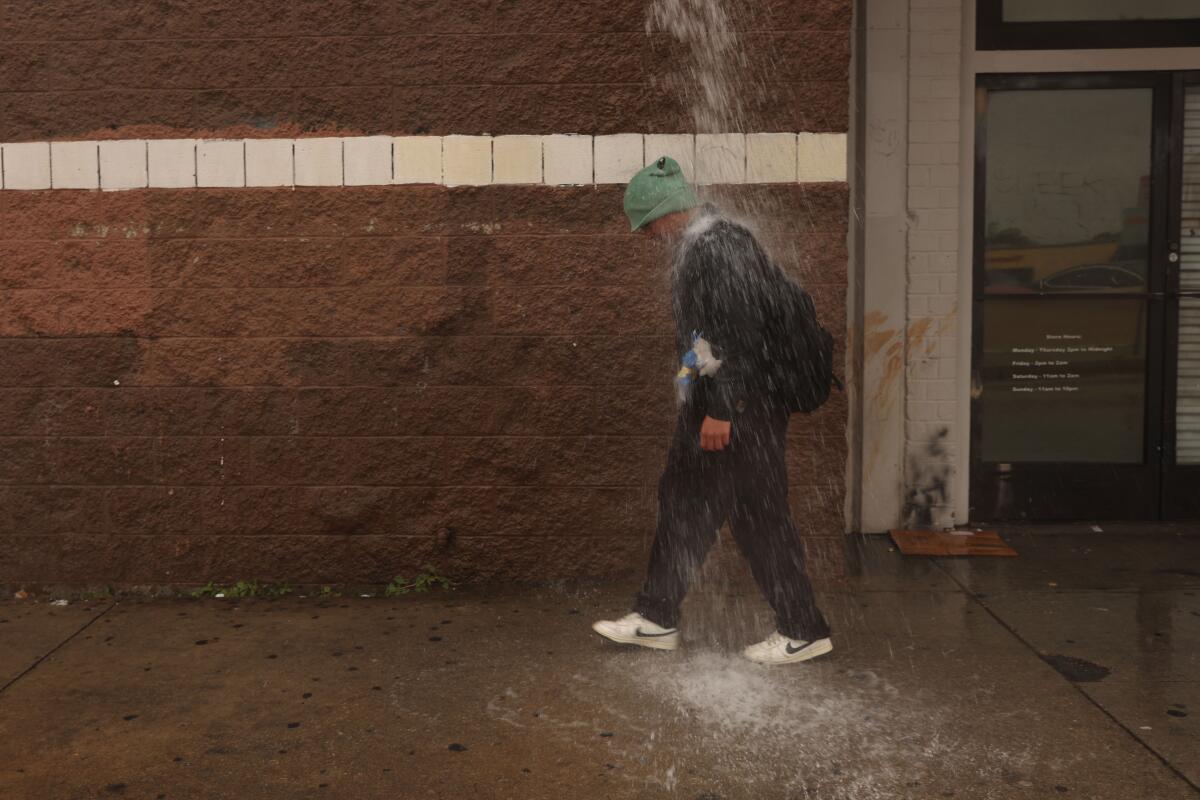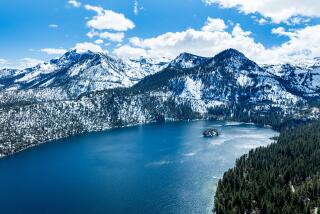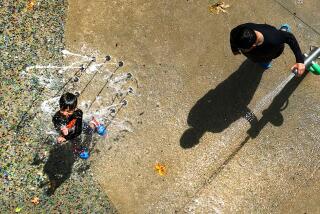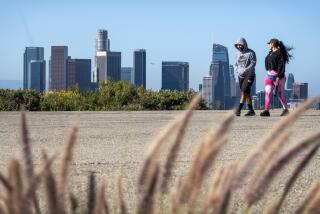Rockslide shuts down Malibu Canyon Road as light showers continue across Southern California

A chilly spring storm system continued to bring cooler temperatures and light showers across Southern California on Sunday, while a rockslide shut down Malibu Canyon Road in both directions in the Santa Monica Mountains.
The region can expect “cool, showery” weather with a slight chance of thunderstorms through sunset on Sunday, with drier and warmer weather expected next week, according to the National Weather Service.
Ventura and Santa Barbara counties were expected to see the most rainfall.
“It’s not going to be as persistent [as Saturday] in terms of duration but when it does hit, it could be heavier downpours and even small hail,” David Gomberg, a meteorologist at the National Weather Service in Oxnard, said Sunday afternoon.
Snow was forecast for the mountains above 6,000 feet, with up to 10 inches falling on the highest peaks and a dusting of up to an inch on the Grapevine.
The Malibu Canyon Road tunnel that cuts through the Santa Monica Mountains from Piuma to the Pacific Coast Highway was closed in both directions on Sunday due to a rockslide, officials said. It was not clear when the roadway — north of Pepperdine University — would be reopened.
A high surf advisory was also issued on Sunday for San Luis Obispo County and Santa Barbara County beaches. The National Weather Service warned of waves up to 12 feet high and “dangerous rip currents.”
Temperatures were stuck in the high 50s to low 60s across the region Saturday, eight to 15 degrees below normal and were expected to remain below normal through Monday.
“This weekend temperatures [will be] struggling to reach 60” degrees,” said meteorologist Rose Schoenfeld, of the National Weather Service Oxnard station.
Wind gusts of 20 mph to 40 mph were forecast to accompany the late-season storm reaching peaks along the Interstate 5 corridor and the Antelope Valley.
The latest in a series of soggy weekends is expected to be followed by at least a week of warm and dry weather starting with above-normal temperatures Tuesday, but is not necessarily the season’s last.
“For six to 10 days out, we don’t see signals for any storm,” Schoenfeld said. “Beyond that, uncertainty.”
Normal precipitation for April is around seven-tenths of an inch.
“If we get one quarter, we won’t be close,” Schoenfeld said, acknowledging though that “rarely do we see a regular normal year.”
Snow was also forecast for California’s Sierra Nevada with up to 8 inches expected in the Mammoth Mountain area later Saturday and up to 12 inches in the higher peaks of the southern Sierra.
Meteorologist Mark Deutschendorf of the National Weather Service Reno station said the new snowfall would moderately add to the late-season surge that has pushed the snowpack to a current level of 118% of normal.
“The whole general theme of this winter season is it started well below average, then in February and March a series of storms brought the totals up,” Deutschendorf said. “We were able to rally and catch up and get slightly above normal.”
Moving from the west, the system hit Central California early Saturday morning, dropping slightly more than a third of an inch in San Francisco and just under four-tenths of an inch in San Jose before moving across the Central Coast, said Roger Gass, meteorologist in the National Weather Service Bay Area station.
Scattered showers and isolated thunderstorms were still possible Saturday afternoon, but there were no reports of damage or flooding, Gass said.
The rainfall brought the season total from average up to 120% of average, Gass said.
More to Read
Sign up for Essential California
The most important California stories and recommendations in your inbox every morning.
You may occasionally receive promotional content from the Los Angeles Times.












